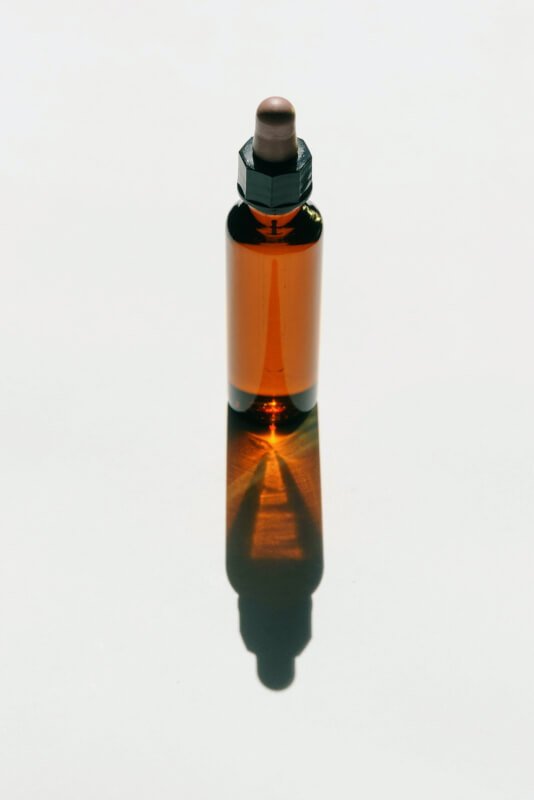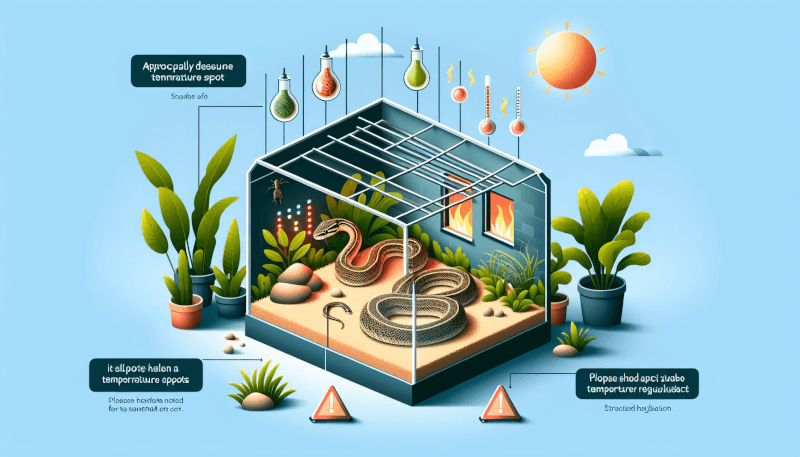Keeping your snake safe and secure is of utmost importance. In order to provide a comfortable and secure habitat for your slithering friend, it is crucial to create an environment that prevents any possibility of escapism. Whether you are a new snake owner or have had one for a while, this article will guide you on how to ensure the security and escape-proof nature of your snake’s habitat. With a few simple steps and precautions, you can create a safe haven for your snake to thrive in.

Choosing the Right Enclosure
Size and Space Requirements
When choosing an enclosure for your snake, it’s essential to consider its size and space requirements. Snakes come in a variety of sizes, so it’s crucial to choose an enclosure that allows them to move around comfortably. A general rule of thumb is that the enclosure should be at least as long as the snake’s length and wide enough for the snake to fully stretch out.
Material and Construction
The material and construction of the enclosure also play a significant role in providing a secure and safe environment for your snake. Glass terrariums or plastic enclosures are popular choices, as they provide good visibility while still maintaining the necessary temperature and humidity levels. It’s essential to ensure that the enclosure is made of durable material that cannot be easily damaged by the snake’s activities or attempts to escape.
Ventilation and Airflow
Proper ventilation and airflow within the enclosure are crucial for your snake’s health. The enclosure should have proper vents or mesh to allow fresh air to circulate while preventing any drafts. This helps maintain the right humidity levels and prevents the buildup of stale air. Ensuring adequate ventilation will contribute to your snake’s overall well-being and prevent respiratory issues.
Setting Up the Enclosure
Substrate
Choosing the right substrate for your snake’s enclosure is essential. Substrate refers to the material that covers the floor of the enclosure. Options such as reptile carpet, newspaper, or aspen shavings work well for most snake species. It is important to avoid substrates that can be ingested or cause impaction, such as sand or small wood chips.
Hides and Shelter
Providing hides and shelter in your snake’s enclosure is crucial for their overall well-being. Hides give your snake a sense of security and a place to retreat when they want to feel safe. It’s recommended to provide at least two hides in the enclosure to allow your snake to choose between a warm and a cool hide. The hides should be appropriately sized for your snake to fit comfortably inside.
Climbing Accessories
Many snake species are adept climbers and enjoy having opportunities to explore and climb within their enclosure. Adding climbing accessories, such as branches or rocks, allows your snake to exercise and explore their environment. Providing these accessories also helps replicate their natural habitat and adds to their overall enrichment.
Branches and Perches
Some snake species, like tree-dwelling snakes, benefit from having branches or perches in their enclosure. These additions provide vertical space for your snake to climb and explore. Make sure the branches and perches are securely positioned to prevent accidents or injuries. It’s also essential to choose branches that are smooth to avoid causing any harm to your snake’s skin.
Temperature and Humidity Control
Heating Devices
Maintaining the proper temperature in your snake’s enclosure is crucial for their health and well-being. Using heating devices, such as heat mats or ceramic heat emitters, can help create a warm and comfortable environment for your snake. It’s important to place the heating devices on one side of the enclosure to create a thermal gradient, allowing your snake to regulate its body temperature effectively.
Thermometers
To ensure the temperature is optimal for your snake, it’s essential to have thermometers in the enclosure. Place thermometers on both the warm and cool sides of the enclosure to monitor the temperature gradient accurately. This allows you to adjust the heating devices accordingly and ensure the snake’s comfort.
Humidity Gauges
Maintaining proper humidity levels is equally important for your snake’s health. Depending on the snake species, humidity requirements can vary. It’s crucial to monitor the humidity levels using hygrometers and provide the necessary humidity adjustments. This can be achieved by misting the enclosure or using a humidifier, if required, to prevent issues such as shedding problems or respiratory infections.
Maintaining Proper Levels
Regularly monitoring and maintaining the temperature and humidity levels in your snake’s enclosure is crucial. Keep a record of these levels to ensure they consistently meet the specific requirements of your snake species. Make any necessary adjustments to heating and humidity devices to provide a comfortable and healthy environment for your snake.
Lighting for Your Snake
Natural Lighting
Snakes require a day and night cycle, and natural lighting plays a vital role in maintaining their internal clocks. Place the enclosure in an area with access to natural light to provide your snake with a proper day and night cycle. However, it’s important to ensure that direct sunlight does not overheat or overly heat the enclosure.
Artificial Lighting
In cases where natural lighting is limited or insufficient, artificial lighting can be used to provide the necessary light cycle for your snake. Full-spectrum reptile bulbs are often recommended as they mimic natural sunlight. These bulbs should be placed at one end of the enclosure and provide a temperature gradient.
UVB Requirements
Some snake species, particularly those originating from environments with exposure to UVB rays, may require supplemental UVB lighting. UVB helps snakes metabolize calcium and aids in overall health. Research your specific snake species to determine if UVB lighting is necessary and consult with a reptile veterinarian if needed.

Feeding and Watering
Appropriate Diet
Feeding your snake a balanced and appropriate diet is essential for its overall health. Different snake species have different dietary requirements, so it’s crucial to research and understand your particular snake’s needs. Feed appropriate-sized prey items, such as mice or rats, depending on your snake’s size and age. Consult with a reptile veterinarian or reputable sources for guidance on your snake’s specific dietary needs.
Feeding Schedule
Establishing a regular feeding schedule is important for your snake’s well-being. Most snake species should be fed once every one to two weeks, although this can vary. Young snakes may require more frequent feedings, while adult snakes may need to be fed less often. Monitor your snake’s body condition and adjust the feeding schedule accordingly to ensure it maintains a healthy weight.
Water Source
Providing access to fresh and clean water is essential for your snake’s hydration. Use a shallow water dish that is large enough for your snake to soak in if desired. Ensure the dish is securely placed in the enclosure to prevent accidental spills or contamination. Regularly check and replace the water to maintain its cleanliness.
Avoiding Contamination
To prevent contamination and potential health issues, it’s important to avoid placing feeding items inside the snake’s water dish. This can lead to the water becoming soiled or contaminated with bacteria. Maintain a clean environment by removing any uneaten prey items promptly and ensuring the water dish is kept separate from feeding areas.
Preventing Escapes
Secure Enclosure Latches
Ensuring that the enclosure has secure latches is crucial for preventing escapes. Snakes can be surprisingly adept at finding weak spots or gaps in their enclosure to slip through. Double-check that all doors, windows, or openings are securely closed and latched to prevent any potential escape attempts.
Tight Seals and Gaps
Regularly inspect the enclosure for any gaps or openings that may need to be sealed. Snakes can be highly flexible and can squeeze through surprisingly small spaces. Close off any gaps or holes in the enclosure with appropriate materials, such as silicone sealant or reptile-safe tapes, to prevent any potential escape routes.
Well-maintained Enclosures
Keeping the enclosure well-maintained is essential for preventing escapes. Regularly check for any signs of wear and tear, such as damaged screens or loose parts. Repair or replace any damaged components promptly to maintain a secure environment for your snake. Conduct regular inspections to ensure the enclosure remains in good condition.
Regular Inspection and Maintenance
Perform regular inspections of the enclosure to ensure it remains escape-proof. Check door latches, hinges, and any potential weak points that may need reinforcing. Conduct thorough maintenance, cleaning, and repairs as necessary. Being proactive in maintaining a secure enclosure can help prevent escapes and ensure the safety of your snake.

Handling and Interactions
Safe Handling Techniques
When handling your snake, it’s important to prioritize safety. Snakes can become stressed or agitated if mishandled, which can lead to defensive behaviors or even bites. Learn proper handling techniques, such as supporting their body and avoiding sudden or jerky movements. Approach your snake calmly and handle it with confidence while being mindful of its comfort and well-being.
Avoiding Stress and Agitation
Snakes are generally solitary and prefer peaceful environments. Avoid unnecessary loud noises, sudden movements, or overcrowding their enclosure, as these can cause stress and agitation. Find a quiet and calm space for handling your snake to minimize its stress levels and create a positive interaction experience.
Supervised Out-of-Enclosure Time
Allowing your snake some supervised out-of-enclosure time can provide enrichment and mental stimulation. However, it’s crucial to ensure the area is secure and escape-proof. Designate a snake-proof area, free of potential hazards or hiding spots, where you can supervise your snake’s exploration. Always keep a close eye on your snake to prevent any accidental escapes or injuries.
Health and Disease Prevention
Regular Vet Check-ups
Regular veterinary check-ups are important for maintaining your snake’s health and preventing potential diseases. Schedule routine visits with a reptile veterinarian who specializes in snake care. These check-ups allow for early detection of any health issues and provide an opportunity to discuss proper husbandry practices and any concerns related to your snake’s well-being.
Quarantine New Additions
Introducing new snakes to your existing collection can pose a risk of spreading diseases. To prevent the spread of potential illnesses, always quarantine new snake additions for a designated period. Separate them from your established snakes and observe them closely for any signs of illness or parasites. This helps protect the health of your entire collection and ensures that any potential health issues are identified before introducing them to other snakes.
Proper Hygiene and Cleaning
Maintaining proper hygiene and cleanliness within the enclosure is essential for your snake’s health. Regularly clean the enclosure, including removing any waste or soiled bedding promptly. Use reptile-safe cleaners to disinfect the enclosure, but ensure all traces are thoroughly rinsed off before reintroducing your snake. Good hygiene practices help prevent the buildup of bacteria or parasites that can cause diseases.

Environmental Enrichment
Providing Hiding Spots
Creating a stimulating and enriching environment for your snake is important for its mental and physical well-being. Providing various hiding spots throughout the enclosure offers your snake places to retreat, feel secure, and exhibit natural behaviors. Use a variety of hides that mimic natural elements, such as caves, logs, or rock formations, to offer your snake choices and a stimulating environment.
Adding Clutter and Obstacles
Adding clutter and obstacles to the enclosure can provide opportunities for exploration and mimic natural environments. Use non-toxic items like branches, leaf litter, or rocks to create a more complex and visually appealing environment for your snake. These additions encourage natural behaviors such as climbing or burrowing, contributing to their overall enrichment.
Varying Enclosure Layout
Promote mental and physical stimulation by periodically adjusting the enclosure’s layout. Rearrange hides, climbing accessories, and other items to provide a fresh and ever-changing environment for your snake. This helps keep them mentally engaged and encourages exploration and natural behaviors within the enclosure.
Toys and Enrichment Activities
Introducing toys and enrichment activities can further enhance your snake’s environment. Snakes, although not as interactive as some pets, can still benefit from the addition of certain toys or activities. Interactive feeding puzzles or moving objects can stimulate their hunting instincts, providing mental stimulation and exercise. Ensure any toys or enrichment items are safe, non-toxic, and appropriate for your snake’s size and species.
Educating Yourself
Researching Snake Species
One of the most important aspects of providing appropriate care for your snake is understanding its specific needs. Researching your snake species is crucial to learn about its natural habitat, dietary preferences, behavior, and specific care requirements. Rely on reputable sources such as books, scientific journals, or reputable reptile care websites to gather accurate and up-to-date information.
Learning Their Behavior
Understanding your snake’s behavior is key to properly interpreting its needs and ensuring its well-being. Each snake species has unique behavior patterns, feeding habits, and preferred environmental conditions. Observe your snake’s behavior closely, and take note of any significant changes, as these may indicate underlying health issues or stressors that need attention.
Staying Informed about Care
Continuously staying informed about snake care is essential for providing the best possible environment for your pet. Join online reptile forums or communities to connect with experienced snake owners and stay up to date on new care practices or advancements in snake husbandry. Attend reptile expos or local herpetology clubs to gain practical knowledge and learn from experts in the field. The more you educate yourself, the better equipped you will be to provide optimal care for your snake.
In conclusion, creating a secure and escape-proof environment for your snake requires careful consideration of enclosure size and material, proper temperature and humidity control, appropriate lighting, feeding and watering practices, preventative measures against escape, safe handling techniques, health and disease prevention, environmental enrichment, and continuous education. By following these guidelines and staying proactive in maintaining your snake’s well-being, you can provide a safe and enriching habitat that supports their health and happiness for years to come.



